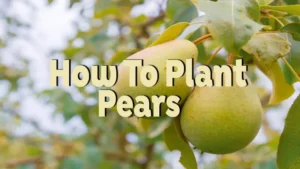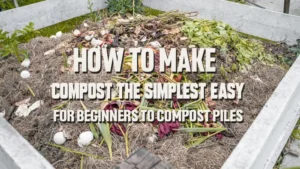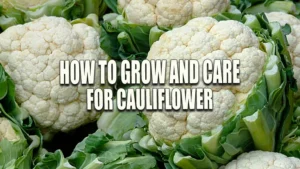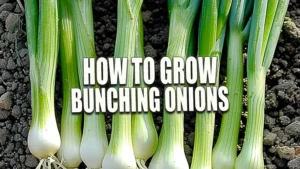Guide to Planting Urban Trees: Step by Step
- February 12, 2025
- 0 comment
Planting trees in urban areas is more than just a landscaping decision; it’s an investment in the future of cities. Trees provide ecological, social, and economic benefits, from filtering air pollution to cooling down neighborhoods during hot summers. However, establishing trees in an urban environment involves challenges that aren’t as prevalent in rural areas, including limited space, soil quality issues, and competition with infrastructure.

This guide will cover everything you need to know about planting urban trees, from selecting the right species to ensuring long-term care.
List of Table Content
- Benefits of Urban Trees
- Key Considerations for Urban Trees Planting
- Choosing the Right Tree Species
- How to Plant Urban Trees: Step-by-Step Guide
- Tree Care After Planting
- Dealing with Urban Trees Challenges
- Long-Term Maintenance of Urban Trees
Benefits of Urban Trees
Urban trees offer an array of benefits that make them invaluable in city planning. Here are just a few of the advantages:
- Improved Air Quality: Trees act as natural air filters, trapping dust, smoke, and other pollutants while releasing oxygen into the atmosphere.
- Cooling Effect: Trees reduce the urban heat island effect by providing shade and through transpiration, where water is released from leaves into the air, cooling the surrounding area.
- Increased Property Value: Studies show that homes with mature trees or tree-lined streets often see an increase in property values.
- Social and Psychological Benefits: Green spaces, including trees, reduce stress, encourage outdoor activity, and even lower crime rates in some urban areas.
Understanding these benefits reinforces the importance of planting and maintaining trees in urban settings.
Considerations for Urban Trees Planting
Urban environments are often harsh for trees, making it crucial to carefully consider a few key factors before planting:

Soil Quality
Urban soils are often compacted or contaminated. Healthy trees need well-aerated soil with good drainage. Sometimes, soil may need to be amended or completely replaced with higher-quality material.
Space and Root Growth
Many urban areas have limited space due to sidewalks, roads, and buildings. Tree roots can be expansive, so it’s important to choose species that will fit the available space both above and below ground.
Water Availability
Unlike natural environments, urban areas might not provide consistent water. Consider how the tree will be watered whether through rain, irrigation systems, or manual watering—especially in the early stages of growth.
Choosing the Right Tree Species
The right tree species will depend on a variety of factors, including climate, available space, and local wildlife. Not all trees thrive in urban environments, so it’s essential to make informed decisions.

Native vs. Non-Native Species
Whenever possible, opt for native species. These trees have adapted to the local climate, soil, and water conditions, making them more resilient. Non-native species, while sometimes appealing, may struggle with pests or environmental stressors.
Tree Size and Growth Habits
Consider the mature size of the tree, including both height and root spread. Some trees are better suited to small spaces, while others need wide, open areas to grow. Species like maples and oaks may have more aggressive root systems, which could damage sidewalks or nearby infrastructure.
Climate Compatibility
Choose trees that can withstand the specific climate of your urban environment. Some trees are drought-tolerant, while others need more water. It’s also important to choose species that can handle local temperature extremes, whether that’s heat or cold.
How to Plant Urban Trees: Step-by-Step Guide
Now that you’ve prepared the site and chosen the right tree, it’s time to plant. Follow these steps for a successful planting:
Step 1: Unpack and Inspect the Tree
Carefully remove the tree from its container or burlap wrapping. Inspect the roots for any signs of disease or damage. Trim off any circling or tangled roots that could strangle the tree as it grows.


Step 2: Prepare the Root Ball
If the tree is root-bound, gently loosen the roots to encourage outward growth. This is crucial for trees in urban areas, where compact soil can limit root expansion.
Step 3: Set the Tree in the Hole
Place the tree in the center of the hole. Ensure that it’s standing straight and that the root flare the point where the trunk starts to widen into roots is level with the soil surface.


Step 4: Backfill and Water Thoroughly
Backfill the hole with soil, gently tamping it down to remove air pockets. Water the tree immediately to help the soil settle and to provide hydration for the roots.
Step 5: Mulch Properly
Apply a 2-4 inch layer of mulch around the base of the tree, but keep it away from the trunk. Mulch helps retain moisture and prevents weeds from competing with the tree for nutrients.

Tree Care After Planting
The first few years after planting are critical to a tree’s survival. Proper care during this period can mean the difference between a thriving tree and one that struggles.
Watering Schedule
Young trees need regular watering, especially in the first few years. Water deeply once or twice a week, depending on weather conditions. During dry spells, increase the frequency to prevent the tree from drying out.
Pruning Guidelines
Avoid heavy pruning immediately after planting. Focus on removing any dead or damaged branches. In the following years, prune to encourage healthy growth and to shape the tree.
Fertilization Needs
Most urban trees won’t need fertilization right away, especially if you’ve used soil amendments. If the tree shows signs of nutrient deficiency, such as yellowing leaves, you may consider a slow-release fertilizer.
Dealing with Urban Trees Challenges
Urban environments present specific challenges that must be addressed for trees to thrive:
Space Constraints and Root Barriers
Use root barriers to prevent roots from damaging sidewalks or underground pipes. These barriers guide the roots downward rather than outward.
Compacted Soil Solutions
In highly compacted areas, use techniques like vertical mulching or soil decompaction to improve aeration and water penetration.
Pollution and Pests
Urban trees are often exposed to higher levels of pollution and pests. Regular monitoring and the use of environmentally friendly pest control methods can help mitigate these issues.
Long-Term Maintenance of Urban Trees
Trees are a long-term investment, and they require ongoing care to thrive in urban environments.
Monitoring Growth and Health
Regularly inspect the tree for signs of stress, disease, or pest infestations. Early detection can prevent minor issues from becoming major problems.
Preventing Tree Damage in High-Traffic Areas
In busy urban areas, trees are at risk of damage from pedestrians, vehicles, and even vandalism. Installing tree guards or fences can protect young trees from physical harm.
Conclusion
Planting urban trees is a rewarding endeavor that brings countless benefits to cities and their inhabitants. By choosing the right species, preparing the site properly, and providing ongoing care, you can ensure that your tree will thrive in even the most challenging urban environments. Remember, urban trees don’t just grow overnight they require patience, dedication, and a commitment to long-term maintenance.
FAQs
- What are the best types of trees for urban environments?
The best trees for urban areas are those that are drought-tolerant, have non-invasive root systems, and are resistant to pollution. Native species such as oak, maple, and elm are often ideal choices, but non-native trees like ginkgo and honey locust can also thrive in cities. - How deep should I plant a tree in an urban area?
You should plant the tree at the same depth it was growing in its nursery container or root ball. Make sure the root flare (where the trunk widens at the base) is at soil level. Avoid planting too deep, as this can lead to root rot. - How much space should I leave between the tree and nearby structures like sidewalks or buildings?
Ideally, allow at least 5-10 feet between small trees and structures, and 15-30 feet for larger trees. This gives the roots room to grow without causing damage to foundations, sidewalks, or utility lines. - How often should I water a newly planted urban tree?
Water newly planted trees once or twice a week for the first two years, ensuring the water penetrates the soil deeply. Adjust the schedule depending on rainfall, temperature, and the tree’s species. - What type of soil is best for planting urban trees?
Urban trees prefer well-draining soil rich in organic matter. If the native soil is compacted or poor, consider adding compost or topsoil to improve aeration and water retention. - Can I plant trees near underground utilities?
It’s important to avoid planting large trees with aggressive root systems near underground utilities. Always check for utility lines before digging and choose small or medium-sized trees if planting near pipes or cables. - When is the best time of year to plant trees in an urban environment?
The best time to plant trees is in early spring or fall when temperatures are cooler, and the tree has time to establish its roots before the extreme heat of summer or the cold of winter. - How can I protect my urban tree from pests and diseases?
Regularly inspect your tree for signs of pests or diseases. You can use natural pest repellents or introduce beneficial insects to control harmful pests. Make sure the tree is healthy by providing adequate water and nutrients to prevent disease. - Should I stake my newly planted tree?
Staking may be necessary for trees in windy areas or those with weak trunks. However, if a tree can stand on its own, it’s better not to stake it as this encourages stronger root and trunk development. - What is the importance of mulching around an urban tree, and how should I apply it?
Mulching helps retain soil moisture, reduces weeds, and provides essential nutrients as it decomposes. Apply a 2-4 inch layer of mulch around the tree, but avoid piling it against the trunk, which can lead to rot and disease.

Joel Cunningham
Forestry AuthorI'm Joel Cunningham, an expert in pruning and weed management with over a decade of experience. My skills are rooted in formal training and extensive practice, focusing on advanced pruning techniques and efficient weed control. I'm known for my quality work, precision, and deep understanding of plant health and soil dynamics. My contributions extend to educational initiatives where I share sustainable practices and advice, establishing myself as a reliable and authoritative figure in the gardening community.













Leave your comment